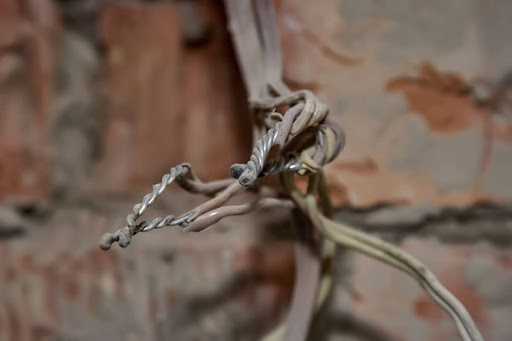Home construction has changed dramatically over the decades. Materials come and go as we learn more about their performance and safety. Wiring is one area where what was once standard practice is now recognized as potentially hazardous.
Aluminum wiring was commonly installed in homes between the mid-60s and the mid-70s, but we’ve since discovered serious problems with it. If you own a house built during this period, your electrical system might be putting your family at risk. It’s time to address this outdated and dangerous wiring before it causes problems.
The Rise and Fall of Aluminum House Wiring
Back in the mid-1960s, copper prices skyrocketed, pushing builders and electricians to look for cheaper alternatives. Aluminum became the go-to replacement, as it conducted electricity, cost much less, and seemed like the perfect solution to the copper shortage.
Aluminum wire was installed in nearly two million American homes between 1965 and 1973. At first, it appeared to work fine. However, as time passed, electricians started noticing troubling patterns of electrical failures and house fires connected to these aluminum systems.
By the mid-1970s, the evidence was clear — aluminum wire simply didn’t perform like copper over the long haul. Insurance companies began raising rates or even denying coverage to homes with aluminum wiring. The electrical industry had to acknowledge that what seemed like a smart money-saving switch had created a widespread safety issue in homes across America.
Why Aluminum Wiring Becomes Dangerous
The problems with aluminum as an electrical conductor come down to its basic physical properties. Aluminum expands and contracts more than copper when heated (which happens every time electricity runs through it). This constant thermal expansion and contraction gradually loosen connections at outlets, switches, and junction boxes.
Loose connections create resistance, which generates heat. As connections heat up, the aluminum oxidizes faster, creating more resistance and even more heat. This vicious cycle continues until connections get hot enough to start a fire.
Another issue is that aluminum is softer than copper. When you tighten a screw on an aluminum wire, the metal “creeps” or deforms over time, loosening the connection. This isn’t something you’ll notice day to day. It happens gradually over years until one day, a connection fails or overheats.
Water and humidity worsen these problems by accelerating corrosion. In areas near plumbing or in basements where moisture levels are higher, aluminum wiring deteriorates even faster.
Warning Signs of Aluminum Wiring Issues
You need to know what to look for if your home has aluminum wiring. Here are telltale signs of trouble:
- Flickering lights that can’t be explained by a loose bulb are often the first warning. When connections deteriorate, power flow becomes unstable, causing lights to dim or flicker intermittently.
- Outlets or switch plates that feel warm to the touch indicate resistance is creating heat — a serious red flag. This heat isn’t normal and points to a connection problem that’s already advancing.
- Circuit breakers that trip repeatedly without apparent cause might be responding to resistance and heat build-up in aluminum wire connections.
- A burning plastic smell near outlets or switches requires immediate attention. This odor typically means insulation or wire coatings are already overheating.
The Hidden Cost of Keeping Aluminum Wiring
Many homeowners avoid dealing with aluminum wiring because of the perceived expense. However, keeping outdated aluminum wiring carries hidden costs you might not have considered.
Your home insurance premiums are likely higher if your policy provider knows about the aluminum wiring. Some insurance companies charge significantly more to cover this known fire risk, while others might refuse coverage entirely until the wiring is upgraded.
The resale value of your home drops considerably when inspection reports identify aluminum wiring. And of course, there are the fire safety concerns, which are the most serious cost of all. The Consumer Product Safety Commission found that homes with aluminum wiring are 55 times more likely to have fire hazard conditions than homes wired with copper. No cost savings justify putting your family’s safety at risk.
Solutions for Aluminum Wiring Problems
You have several options for addressing aluminum wiring. Complete rewiring is probably your best option. This involves removing all aluminum wiring and replacing it with modern copper wire. This completely eliminates the hazard and adds value to your home. Full rewiring gives you peace of mind and removes all concerns about failing aluminum wire connections.
Copper pigtailing involves connecting short pieces of copper wire to the existing aluminum wires at each outlet, switch, and junction box. Special connectors designed specifically for connecting copper to aluminum must be used — regular wire nuts won’t work safely. This method can be effective when done correctly but requires checking hundreds of connection points throughout your home.
COPALUM connectors offer another approach. This specialized system uses crimped connectors and requires specific tools to create a cold weld between aluminum and copper wires. When installed by properly trained electricians, COPALUM connectors create a permanent, maintenance-free connection. The catch? Only certain licensed contractors can install this system.
Why You Shouldn’t Wait to Address Aluminum Wiring
Fire doesn’t give warnings before it strikes. Electrical fires often start inside walls where you can’t see the initial flames until they’ve spread dangerously. By then, it’s too late.
Do you really want to lie awake wondering if your wiring is slowly deteriorating inside your walls? The stress alone of knowing your home has a recognized safety hazard isn’t worth it.
We are located in St. Peters, MO, and we proudly serve the Greater St. Louis Area, providing electrical service upgrades designed to make your life easier and safer. Call Grasser Electric today for your electrical services and repairs, including improving the safety of your home with better wiring!

